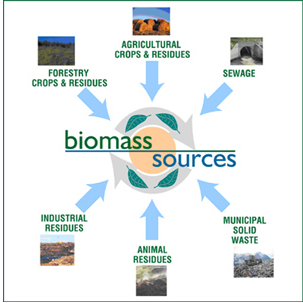In this Article :
1. Situation of punjab in agriculture.
- fields on fire
- its benefit and adverse effect
- Alternative method
- waste management
Fields on fire: making farming more sustainable in India – in pictures
The northern Indian state of Punjab feeds 500 million people each year with rice and wheat, but traditional farming methods that clear fields by burning plant residue release carbon dioxide and other gases. If global agriculture is to reduce its contribution of up to 30% of global greenhouse gas emissions, farming needs to be made more sustainable.
But how? This gallery from agriculture research group CGIAR explores the alternatives
In November in the Indian state of Punjab, farmers sow crops such as wheat and vegetables; but first, they clear fields by setting fire to them. In this image, thousands of fires burn in a band more than 250 kilometres (150 miles) from east to west. The smoke plume extends far to the south-east, obscuring the satellite's view of Delhi
The state feeds around 500 million people each year, with rice production immediately followed by a season of wheat. Punjab comprises only about 1.6% of India’s land surface, but thanks to fertile soils and agricultural advances, the state grows about one-fifth of India’s wheat
Burning has the benefit of killing pests that eat crops and converts crop residue into fertilising ash, but the smoke can cause cardiovascular and respiratory illnesses
A farm worker prepares to burn away rice stubble after the harvest. Around 1m hectares (2.47m acres) of rice stubble goes up in flames during this two-week period each year in Punjab
Although this method of clearing the land is cheap and effective – a hectare is reduced to ash in around 10 minutes – it releases 12 megatonnes of carbon dioxide as well as other, more potent, greenhouse gases
As well as carbon dioxide, the smoke contains toxic chemicals from pesticide residues. It is causing a decline in soil fertility and is threatening the long-term sustainability of Punjab’s rice-wheat crop rotation system
alternative :
There is an alternative: this tractor-drawn seed driller, known as a Happy Seeder, chops the rice stalks and deposits them as mulch, and plants wheat at the same time. However, the machines are too expensive for most farmers, though a state subsidy programme is under way
Low-tech alternatives, such as hand-harvesting and threshing, can also help. Manual harvesting means rice stalks can be cut very short, leaving no stubble in the field and reducing the need to burn. But the bulky rice stalks remain after threshing, and so several initiatives are under way in Punjab to collect and use them as an energy source for biomass plants to produce electricity, or as feed for livestock
consequence (adverse effect )
New Delhi's India Gate, enveloped by pollution, caused by burning crops, traffic and fog
Source : Guardian.co.uk
People should be need to aware about waste management method :
The electricity generation capacity of renewable resources reached an estimated 240 gigawatts worldwide in 2007. Renewable resources represent 5 percent of global power capacity and 3.4 percent of global power generation. Renewable energy supplies 18 percent of the final energy consumption worldwide, counting traditional biomass, large hydropower, and “new” renewables (small hydro, modern biomass, wind, solar, geothermal, and biofuels).
Traditional biomass, primarily for cooking and heating, represents about 13 percent and is growing slowly or even declining in some regions as biomass is used more efficiently or replaced by more modern energy forms. Large hydropower represents 3 percent and is growing modestly, primarily in developing countries. New renewables represent 2.4 percent and are growing very rapidly in developed countries and in some developing countries. Clearly, each of these three forms of renewable energy is unique in its characteristics and trends.
Biomass fuel sources are readily available in rural and urban areas of all developing countries. Biomass-based industries can provide appreciable employment opportunities and promote biomass re-growth through sustainable land management practices. The negative aspects of traditional biomass utilization in developing countries can be mitigated by promotion of modern waste-to-energy technologies which provide solid, liquid and gaseous fuels as well as electricity. Biomass wastes encompass a wide array of materials derived from agricultural, agro-industrial, and timber residues, as well as municipal and industrial wastes.
The most common technique for producing both heat and electrical energy from biomass wastes is direct combustion. Thermal efficiencies as high as 80 – 90% can be achieved by advanced gasification technology with greatly reduced atmospheric emissions. Combined heat and power (CHP) systems, ranging from small-scale technology to large grid-connected facilities, provide significantly higher efficiencies than systems that only generate electricity. Biochemical processes, like anaerobic digestion and sanitary landfills, can also produce clean energy in the form of biogas and producer gas which can be converted to power and heat using a gas engine.

source : http://www.bioenergyconsult.com/biomass-india





Great Post! Thank you such a great amount for sharing. continue blogging...
ReplyDeletecow milk